Windows
- Undo:+or
- Hint:
- Navigate:
- Select:(once)
- Move:in the new spot
Clear all the cards — from both the pyramid and the deck — by making pairs that add up to 13.
You can only remove cards that aren’t covered by others.
A = 1, J = 11, Q = 12. Example pairs: 5+8, J+2, Q+A. K = 13, so it’s removed automatically.
Click the deck to move a card to the waste pile.
You can pair the top card of the deck and the top card of the waste pile, either with each other or with uncovered cards in the pyramid.
You get 3 passes through the deck.
Pyramid Solitaire is a classic Solitaire variant where you have to pair cards with a combined value of 13 to clear the pyramid.
It’s simple in concept but challenging in practice, which has made it a favorite of card game lovers for generations.
Unlike more fast-paced games, Pyramid Solitaire encourages you to slow down and think a few steps ahead. It provides a calming yet stimulating gameplay that can keep you engaged for hours.
Your playing area includes the following key elements:
Clearing the pyramid before you run out of moves is difficult enough, but you also have to empty the Stockpile and Wastepile!
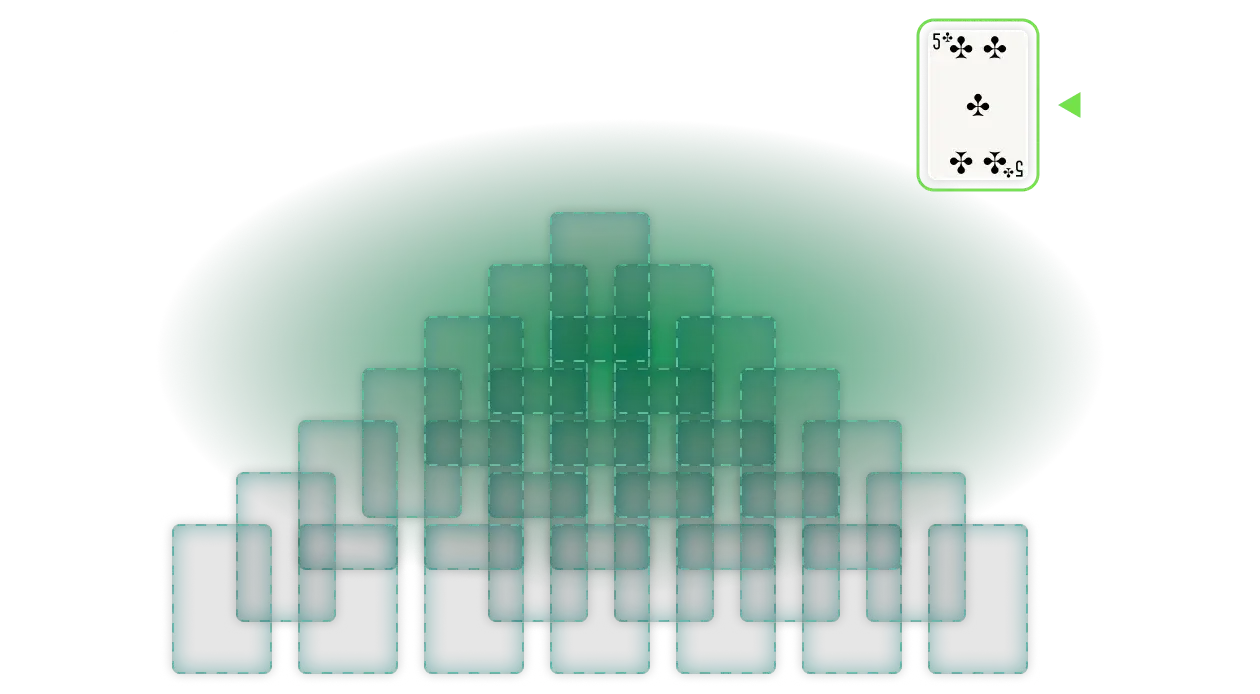

Use the UNDO button if you make a wrong move. It can be a lifesaver!
The Stockpile is there to help you when you get stuck, but don’t rely on it too heavily. You can only cycle through it three times, so try clearing cards from the pyramid first to maximize your chances of winning.
Prefer to play using your keyboard? Here are some convenient keyboard shortcuts for Windows and Mac:
We understand that playing Solitaire isn’t just about the game—it’s about the experience. Our platform is built to bring players to the heart of Solitaire. Your triumphs, challenges, and overall playing experience drive our purpose. Let’s win together!
Add The Solitaire to your desktop and never search for it again
The game’s Tableau is made up of 28 cards stacked in 7 rows. Each row contains one more card than the one above it. The complete Tableau will be shaped like a pyramid with a single card at the top and 7 cards at the base.
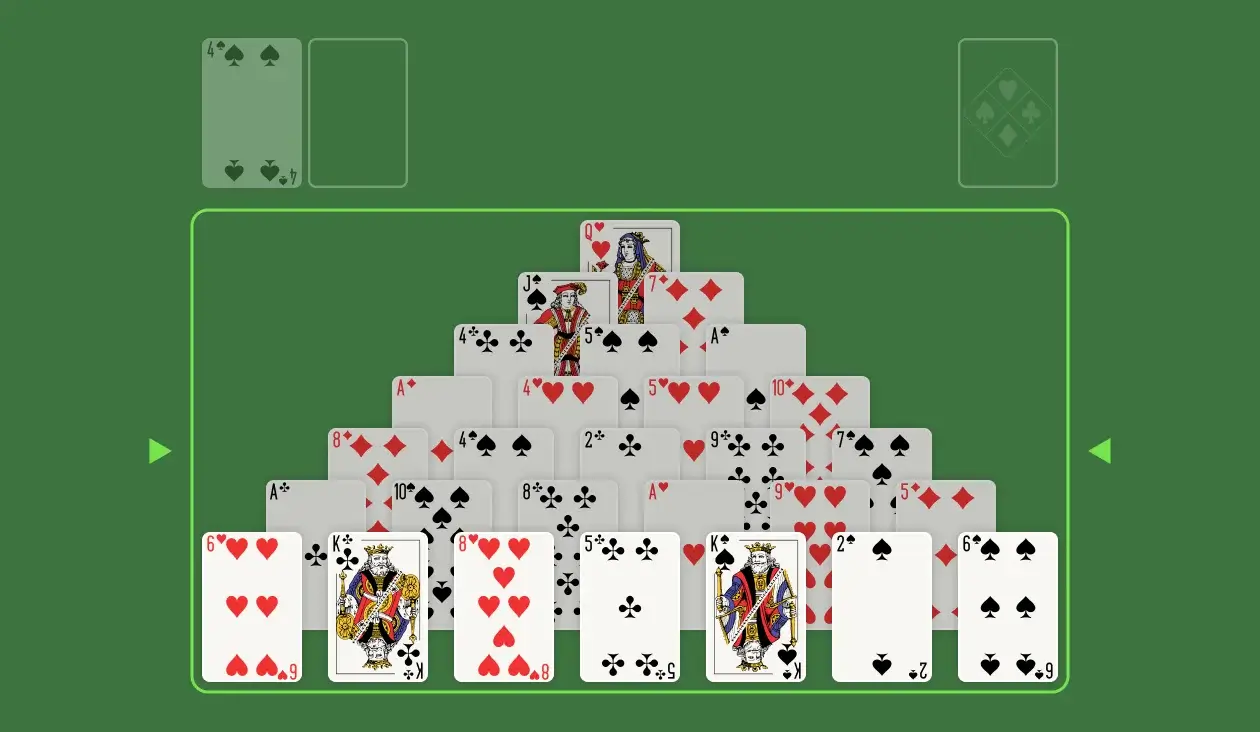
The remaining cards are placed face-up in the Stockpile.
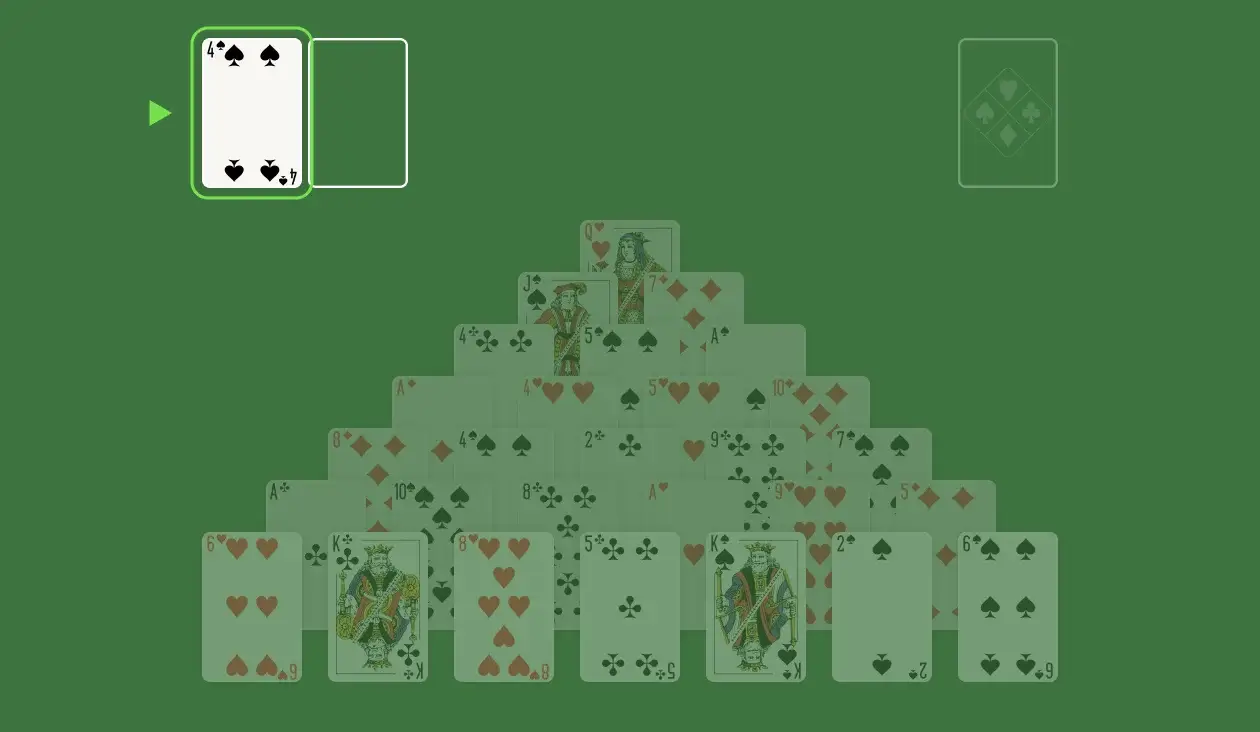
Leave room next to the Stockpile for a Wastepile. When you draw a card from the Stockpile, place it face-up in the Wastepile.
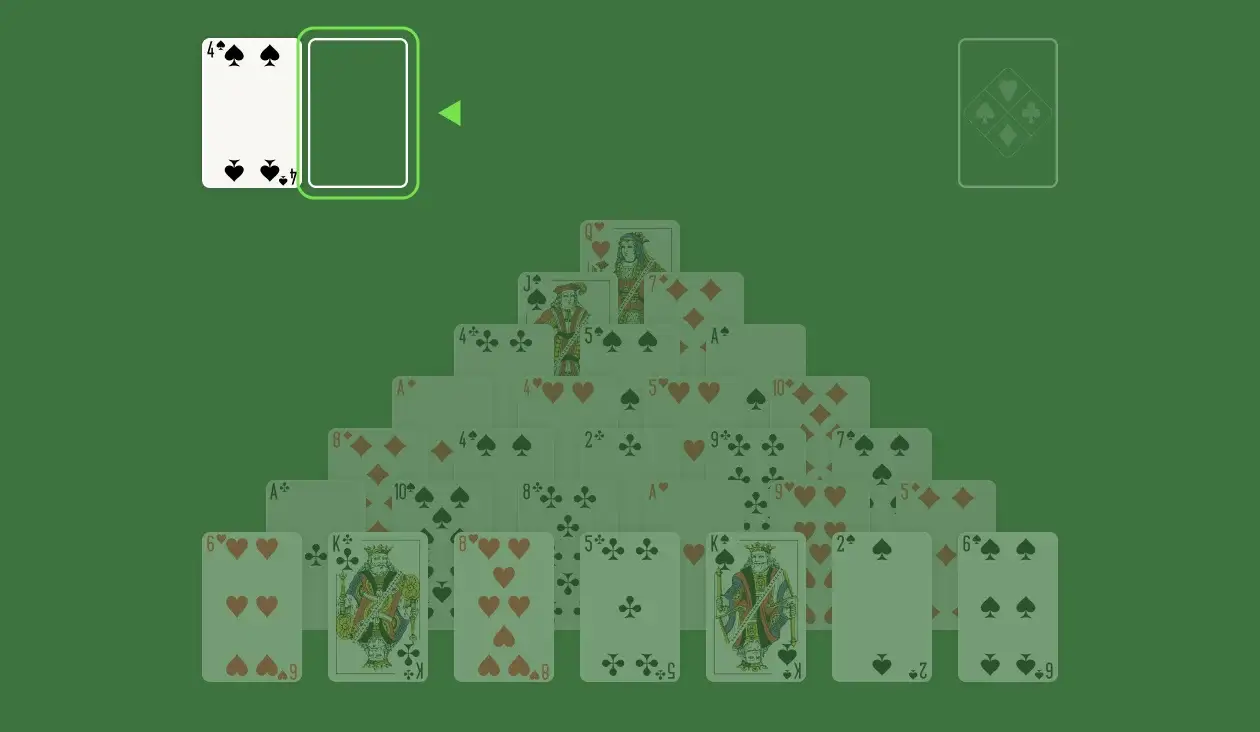
Set up a Discard pile off to the side of your playing area. Move every King you find and pair you make to this pile.
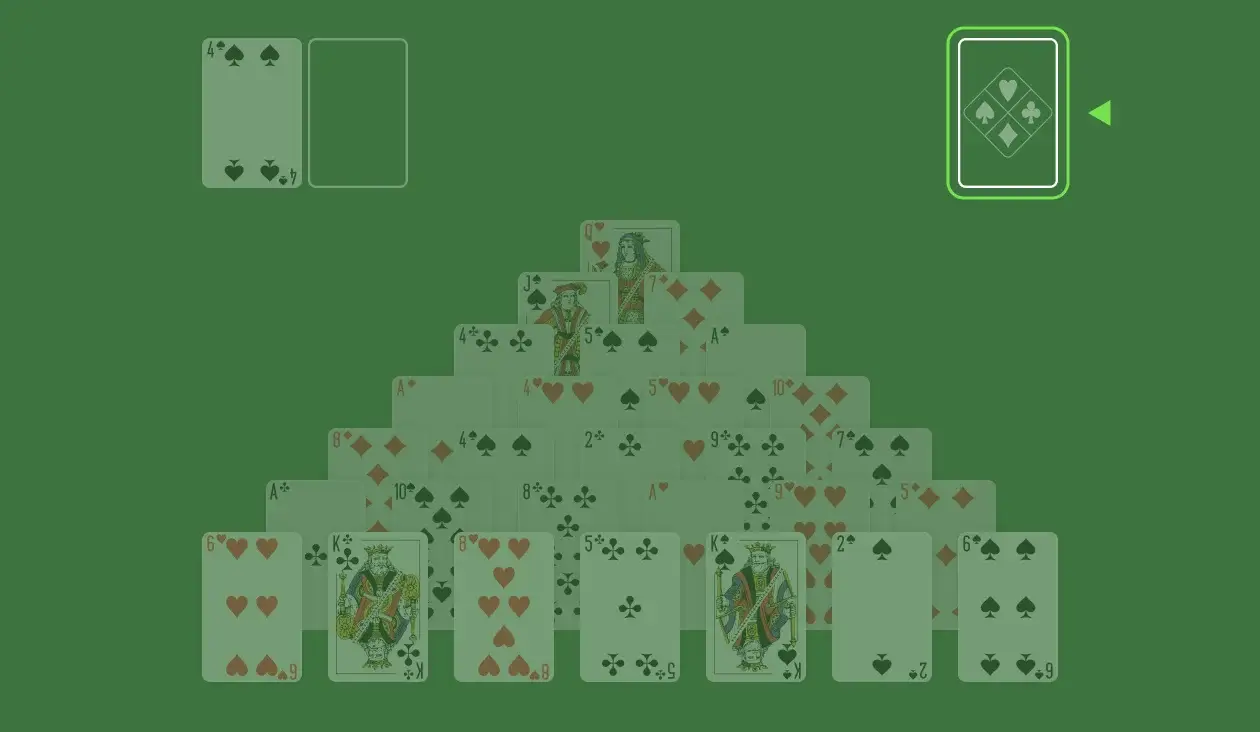
Ace and Queen
2 and Jack
3 and 10
4 and 9
5 and 8
6 and 7
Whenever you can, pair cards from the pyramid instead of relying on your Stockpile and Wastepile. That way, you’ll uncover more cards and unlock new pairing options.
You can only cycle through the Stockpile three times, so only draw from it after exhausting all other options.
Pyramid Solitaire rewards strategic thinking. Before making a move, consider which opportunities each card pairings could open up.
Have Fun!
Pyramid Solitaire was first popularized in the mid-20th century, gaining a following for its unique structure and gameplay that combines skill and luck.
While it seems straightforward, clearing the entire pyramid can be a challenge for even the most experienced players.
Some Pyramid Solitaire players finish a game in less than 2 minutes!